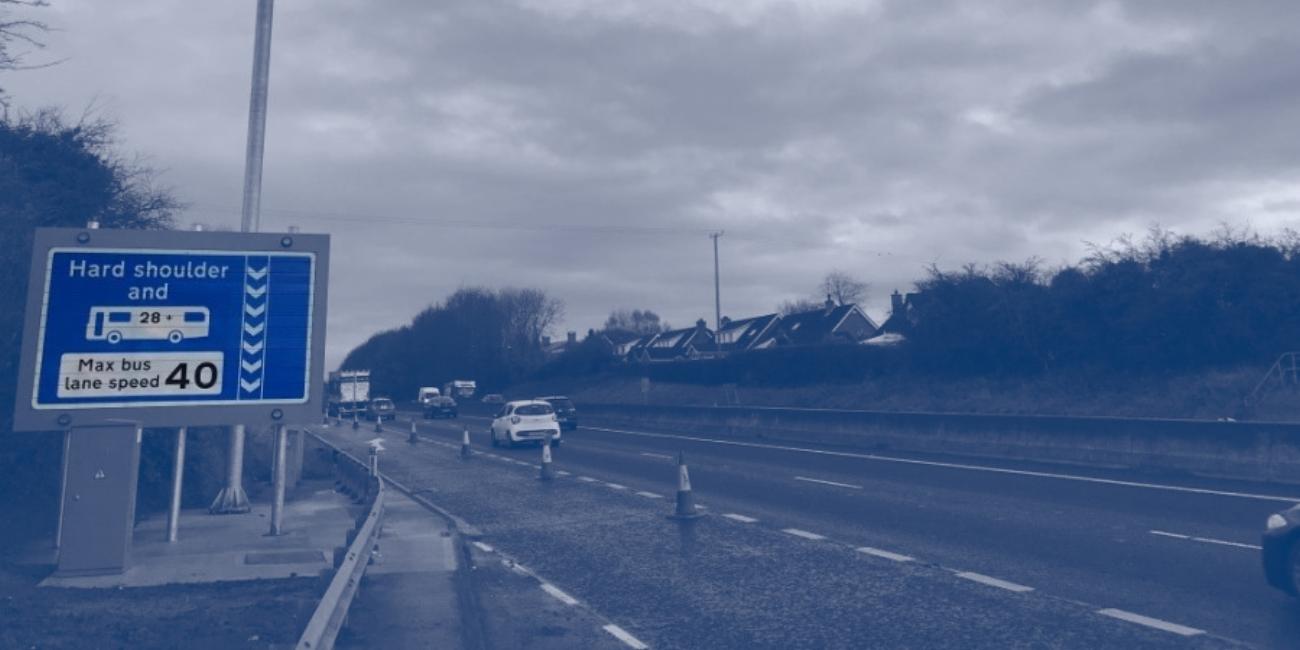AMG Systems and Juniper Networks help deliver Belfast busways monitoring upgrade

The Northern Ireland Department for Infrastructure (DfI) awarded a tender to Graham Construction to work on the extension of hard shoulder bus lanes along the M1 and M2 motorways into Belfast. For the M1, that meant lengthening the bus lane by just over 4.6km, while for the M2 this involved providing a new 2.2km bus lane. The scheme was designed by Dfl Consultants Aecom, who also carried out site supervision and project manager roles during constuction.
According to the Department for Infrastructure, the extended bus lanes are intended to improve journey times and service reliability for bus passengers without affecting general traffic flows.
For both motorways, the work included the provision of new and upgraded Pan Tilt Zoom IP-based CCTV cameras for traffic monitoring purposes by the Traffic Information and Control Centre (TICC) in Belfast.
The TICC, which is operated by DfI Roads, is responsible for the procurement, design, installation and maintenance of traffic signals and controlled pedestrian crossings; the strategic control of traffic on both the urban and motorway networks; the monitoring of urban and motorway traffic flows by a network of closed circuit television cameras; and for providing traffic and travel information.
The new and upgraded cameras for this project were required to “be connected to the existing motorway communication network under the contract, and relay video images sent to the existing CCTV in-station located at TICC”, according to the tender documents.

Moving to IP
Graham used PTZ IP video cameras – installed by Chubb – for the traffic monitoring. But connecting them to the Pelco system in use at TICC was not as straightforward as it at first seemed. That’s where AMG Systems and Juniper Networks came in.
Consultant Jo Hopkins of Highways Consulting explains: “AMG were asked to provide a reliable, cost-effective means of connecting new cameras onto an existing fibre network, bringing the images back to the Traffic Control Centre in Belfast. The task itself was straightforward, but the integration into an existing live system made the project more complex.”
Hopkins said she’d reached out to AMG because the company is “the main provider of switching equipment on the English motorway network”. She’d also worked with them in the past on a Belfast motorway project.
AMG Systems Business Development Director Sara Fisher says: “A few years back we installed equipment for the Belfast Westlink, and the consultants involved on the project remembered using our kit on site. They got in touch with me about this scheme, which was one of the first of its kind in Belfast, using IP cameras. Historically, across the UK the cameras used at the roadside for traffic monitoring have tended to be analogue or hybrid models.
“They needed a network solution for these new IP cameras, so when Jo got in touch with me I put a design together to make this new project work,” she says.
Hopkins outlines the challenge. “On each of the two motorways the existing fibre network had only two spare fibres, and therefore all the images had to be combined onto the two, allowing for a resilient ring,” she says, “meaning that if one fibre broke the other would be able to transmit all the images. The existing cameras on the network were analogue cameras, but we took the opportunity to install digital cameras. This reduces the number of times the images are sampled and converted from analogue to digital and back again, which affects the quality of the image.
“The cameras themselves are standard ONVIF compliant digital cameras. The requirement was for the Highways England motorway type MCE2245B cameras, and this is the first implementation of the ONVIF digital camera variant.
“At the control room end the images were integrated into an existing Pelco digital system, becoming “just” 24 new cameras on the system,” Hopkins says

TICC network
The network designed by Fisher and AMG for Graham utilises nine AMG switches on the M1 fibres and 15 switches for the M2. At the TICC control room, there are a further four AMG switches which allow the IP cameras to connect to the existing Pelco monitoring equipment.
Fisher explains that the control room network connection was further complicated as the TICC had an existing Pelco system in place which required the use of Multi-casting and VLAN’s, as well as an existing firewall.
“The most appropriate interface in this case was Layer 3 POE switches from our partner Juniper networks,” she says

Service and satisfaction
It was AMG’s service, extending beyond merely the supply of high quality products, which made them stand out from the crowd; Hopkins says it’s their level of service which would lead her to utilising AMG again.
“We designed an end to end network solution,” Fisher explains, “and we also pre-configured all of the units before they went to site. We did some final configuration at the control room end as well. We pretty much set up the whole network for them – the network was installed by Chubb, but we did all of the configuration and commissioning of the network.”
A Dfl TICC representative said "The AMG and Juniper network design has met the challenge presented to them in upgrading our hard shoulder bus lane cameras from purely analogue to IP and has provided a resilient network, designed specifically for the task. AMG’s post-sales service and advice has also proved extremely helpful."
